This post may contain affiliate links. For more information, please see our affiliate policy.
Learn how to make Clarified Butter, an easy process that removes the water and milk solids from whole butter. Clarified butter has a more concentrated, richer flavor, lasts longer in the refrigerator, and has a higher smoke point for cooking.
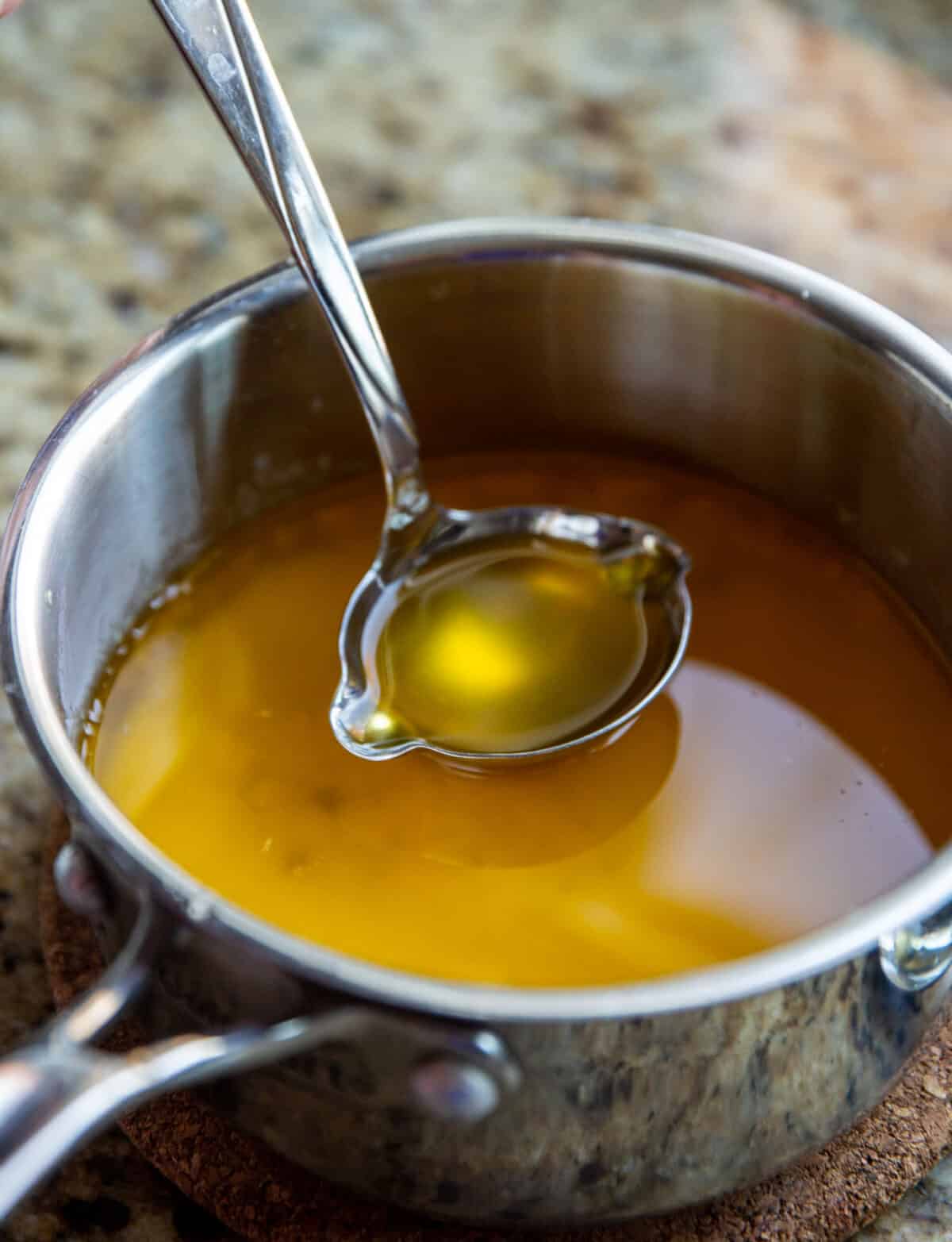
When you make clarified butter, you skim milk solids off the top of melted butter and leave released water in the bottom of the pan. The stuff in the middle, the liquid gold, is 100% pure butterfat.
This means a higher smoke point, a longer shelf life, a rich buttery flavor, and a more versatile substance great for making everything from stir-fries to sauces.
This recipe is not for Ghee, specific type of clarified butter that is shelf-stable at room temperature, although I cover the differences and how to make it in the FAQ section.
Table of Contents
Recipe ingredients
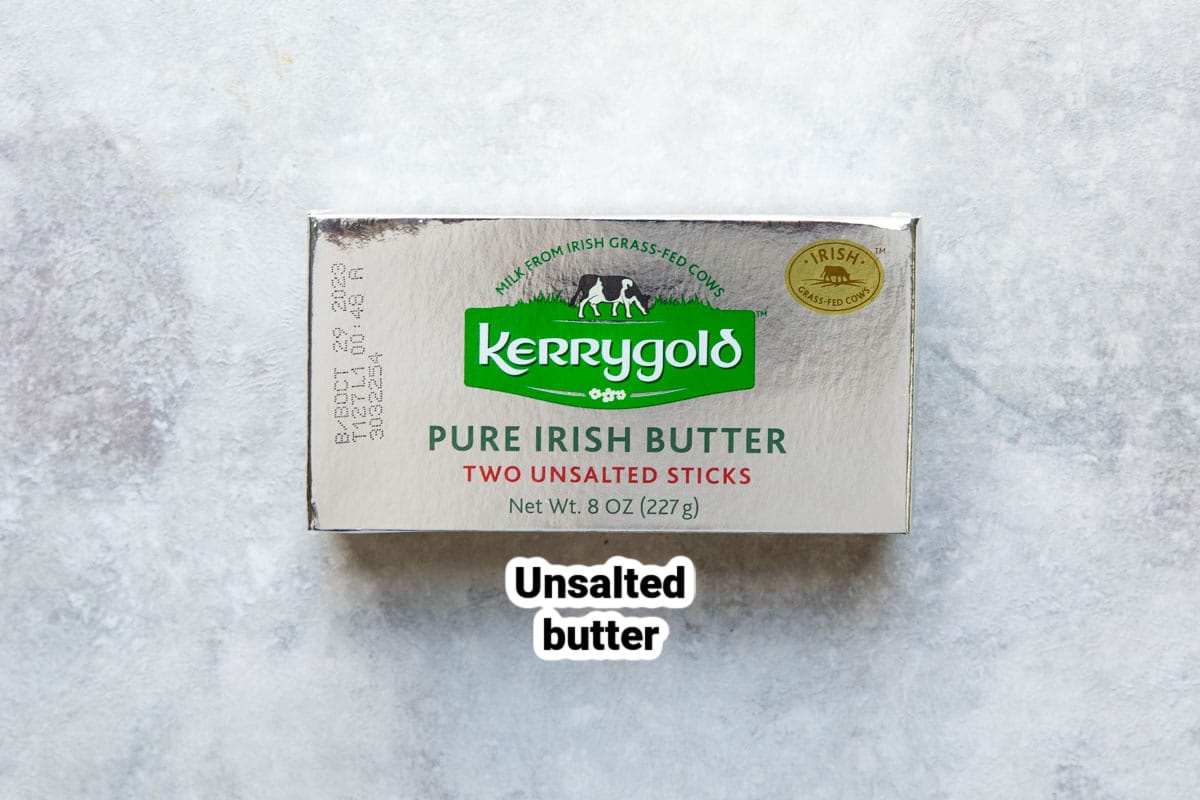
At a Glance: Here is a quick snapshot of what ingredients are in this recipe.
Please see the recipe card below for specific quantities.
Ingredient notes
- Better butter: The best butter for clarifying is European-style, imported butter. These butters usually contain more milk fat than American butter (82% to 86% milk fat in European vs. 80% to 82% in American). After clarifying some store-brand or other inexpensive butters, I was left with what looked like a pan of yellow water. Not appetizing! If you are clarifying butter to make a delicious Hollandaise Sauce, choose a delicious butter (since Hollandaise Sauce is mostly butter). But If you’re clarifying butter to make a stir-fry, the quality won’t be quite as important.
- Butter solids: You can lightly brown the butter solids (the layer you scooped off the top) in a small amount of clarified butter to make “browned butter.” Then, add to cookies, vegetables, soups, and mashed potatoes for extra butter flavor, or use as a condiment on bread.
Step-by-step instructions
- In a small saucepan over low heat, warm butter without boiling or agitation of any kind. As the butter melts, the solids rise to the top and water sinks to the bottom. Sometimes the solids appear to bubble up from the bottom.
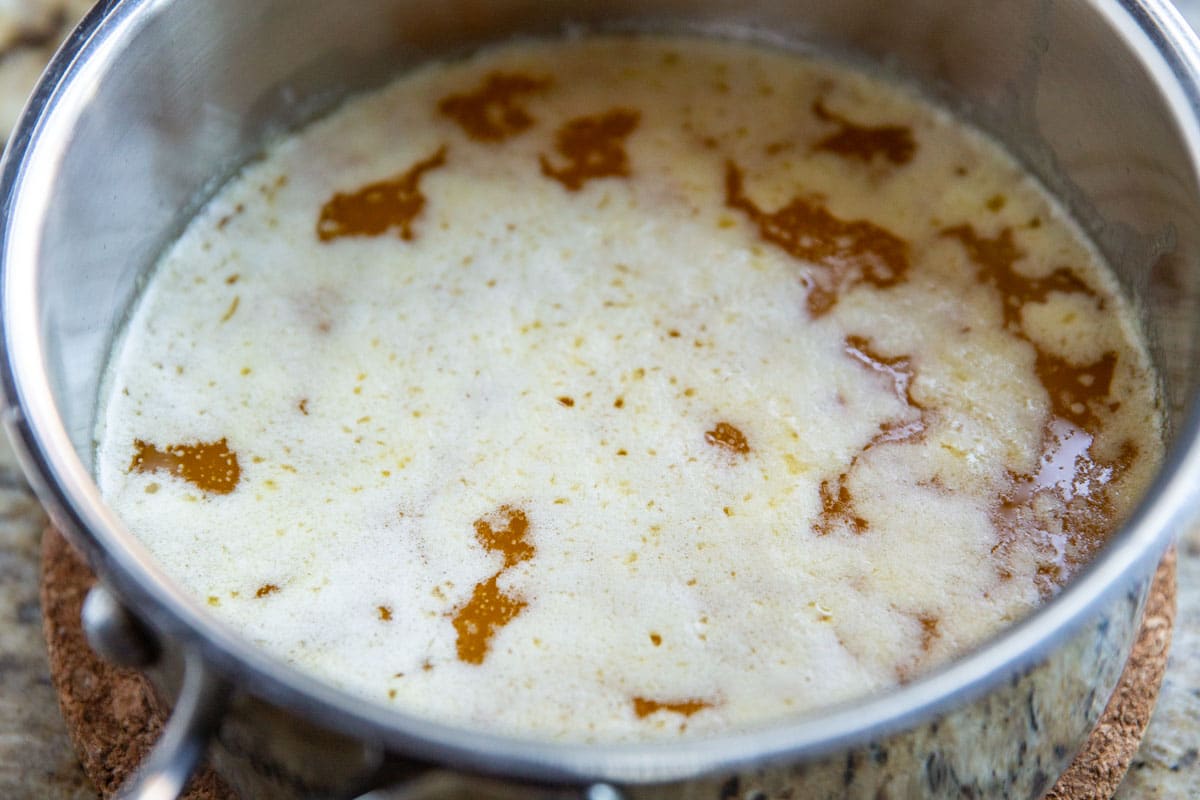
- When the butter is melted, skim the milk solids from the top using a ladle or slotted spoon (see notes for ideas of what to do with the solids).
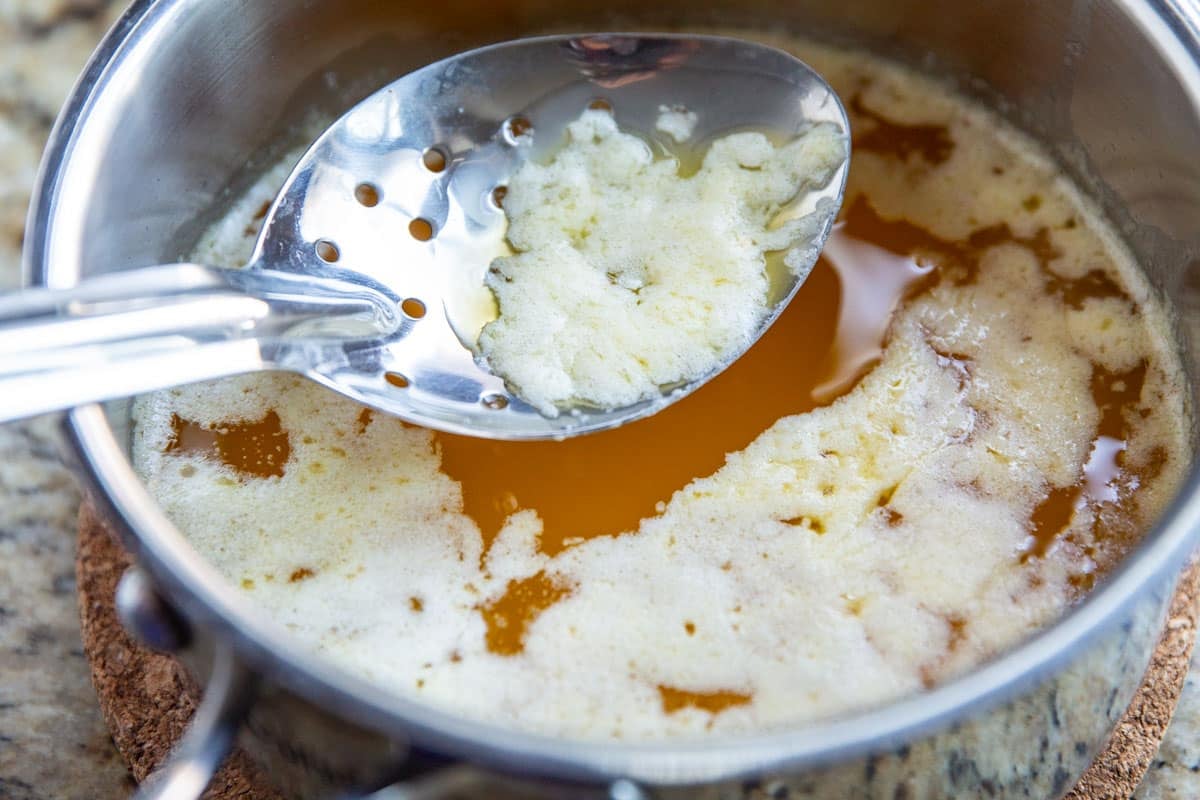
- When the skim solids have been removed, transfer the butterfat to a clean saucepan, bowl, or jar using a ladle. Leave the water in the bottom of the pot.
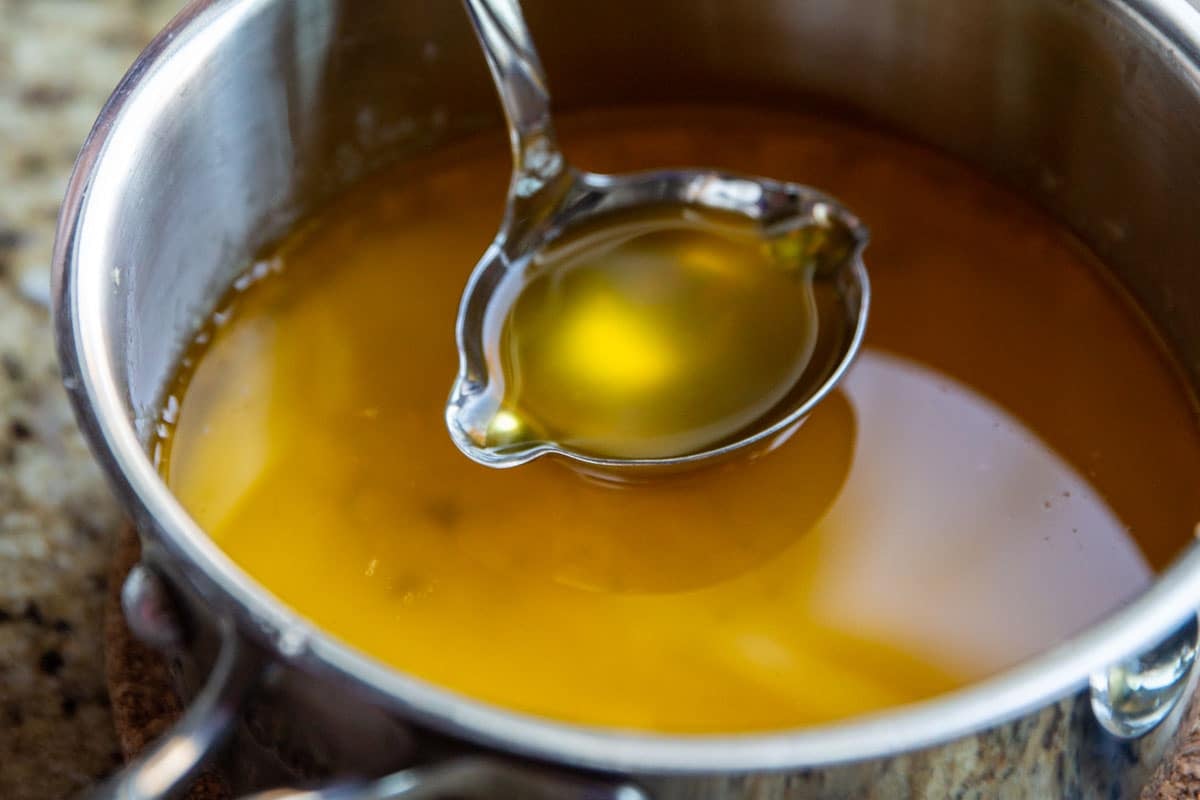
Recipe tips and variations
- Yield: 1 pound of butter yields about 12 ounces of clarified butter, enough for 8 servings, 1 ½ ounces (3 tablespoons) each.
- Storage: Store clarified butter in a jar the fridge for up to 2 months.
- Freezer: Pack in a freezer-safe container, label, date, and freeze clarified butter for up to 6 months.
- No slotted spoon: Strain your solids away with cheesecloth or a fine-mesh sieve or fine mesh strainer.
- Flavors: Add fresh garlic, herbs, and spices to your clarified butter. See Compound Butter 6 Ways for delicious flavor combinations for butter.
- Serving suggestions: Drizzle hot clarified butter over your next New York Strip Steak, Roast Beef Tenderloin, or Steak and Lobster for extra richness. Or, try on pancakes, crab legs, and roasted vegetables (especially potatoes). Clarified butter is also an ingredient in some Hollandaise recipes.
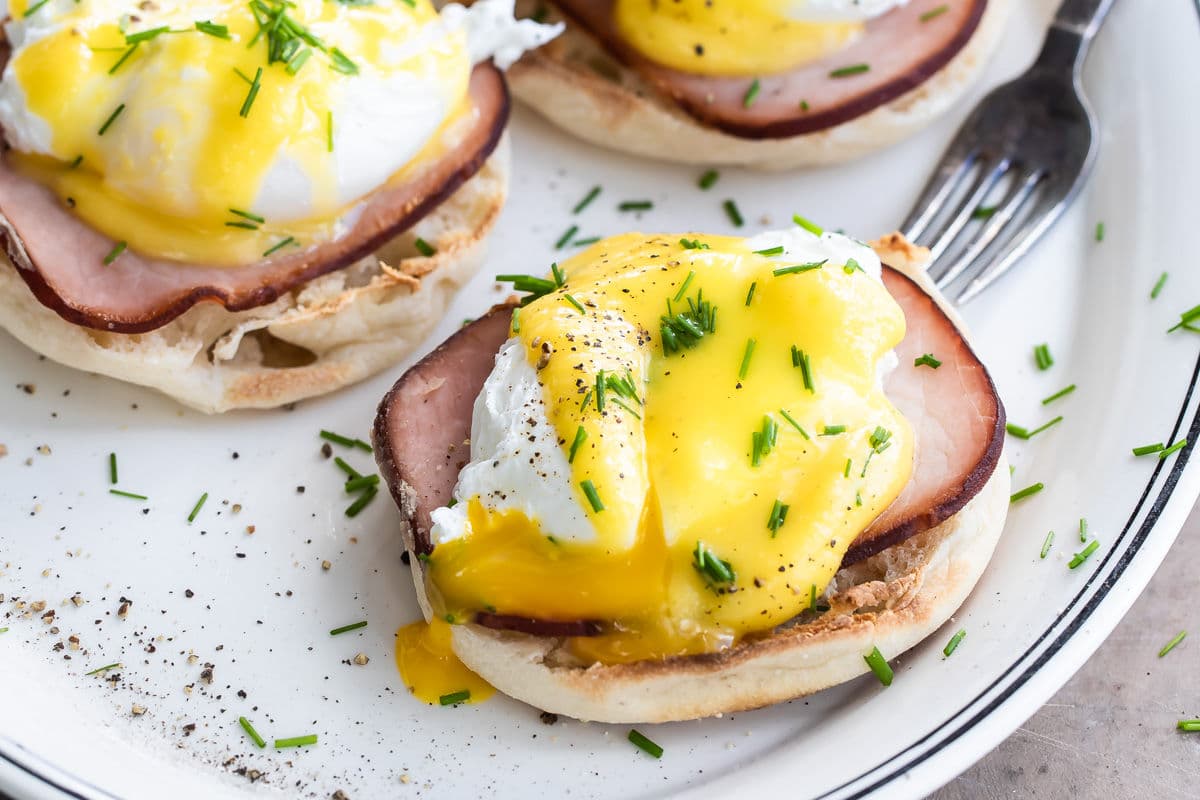
Frequently Asked Questions
Clarified butter and ghee are almost the same thing. They are both regular butter with the milk and water solids removed (leave pure butterfat). Ghee is a particular type of clarified butter normally used in Indian cooking.
Clarified butter is often made by melting butter, skimming off the foam, and leaving the water in the bottom of the pan. Ghee, however, is boiled rapidly over medium-high heat until the water in the butter bubbles and actually boils off and the milk proteins brown. You strain the ghee to remove the milk solids and the resulting butterfat, ghee, is pure and can be stored at room temperature for up to 3 months or 1 year in the refrigerator.
Because clarified butter is pure butterfat, it has a high smoke point (about 450 degrees) compared to regular butter (about 350 degrees).
The clarified butter method in this recipe does not produce shelf-stable butter and must be kept in the refrigerator. Ghee, which has been boiled for at least 10 minutes to remove the water, and then strained to completely remove all milk solids, is the shelf-stable version for up to 3 months or can be refrigerated for up to 1 year.
More ways to enjoy clarified butter
Beef Recipes
Roast Beef Tenderloin
Main Dishes
Surf and Turf
Mexican Recipes
Steak Fajitas
Beef Recipes
Grilled Tri-Tip
Join Us
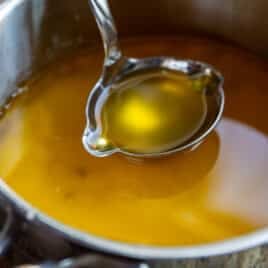
Clarified Butter
Equipment
Ingredients
- 1 pound unsalted butter
Instructions
- In a small saucepan over low heat, warm butter without boiling or agitation of any kind.
- As the butter melts, the solids rise to the top and water sinks to the bottom. Sometimes the solids appear to bubble up from the bottom.
- When the butter is melted, skim the milk solids from the top using a ladle or slotted spoon (see notes for ideas of what to do with the solids).
- When the skim solids have been removed, transfer the butterfat to a clean saucepan or bowl using a ladle. Leave the water in the bottom of the original saucepan.
Recipe Video
Notes
- Better butter: The best butter for clarifying is European-style, imported butter. These butters usually contain more milk fat than American butter (82% to 86% milk fat in European vs. 80% to 82% in American). After clarifying some store-brand or other inexpensive butters, I was left with what looked like a pan of yellow water. Not appetizing! If you are clarifying butter to make a delicious Hollandaise Sauce, choose a delicious butter (since Hollandaise Sauce is mostly butter). But If you’re clarifying butter to make a stir-fry, the quality won’t be quite as important.
- Butter solids: You can lightly brown the butter solids (the layer you scooped off the top) in a small amount of clarified butter to make “browned butter.” Then, add to cookies, vegetables, soups, mashed potatoes for extra butter flavor, or use as a condiment on bread.
- Yield: 1 pound of butter yields about 12 ounces of clarified butter, enough for 8 servings, 1 ½ ounces (3 tablespoons) each.
- Storage: Store clarified butter in the refrigerator for up to 2 months.
- Freezer: Pack in a freezer-safe container, label, date, and freeze clarified butter for up to 6 months.
Nutrition
Meggan Hill is a classically-trained chef and professional writer. Her meticulously-tested recipes and detailed tutorials bring confidence and success to home cooks everywhere. Meggan has been featured on NPR, HuffPost, FoxNews, LA Times, and more.
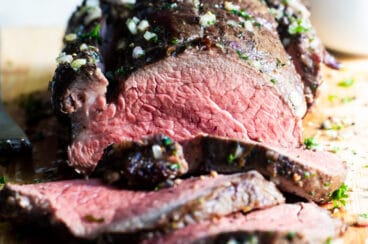
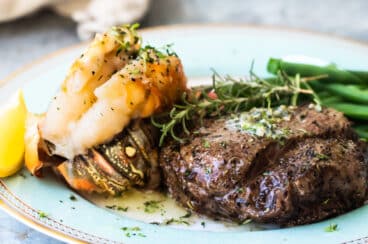

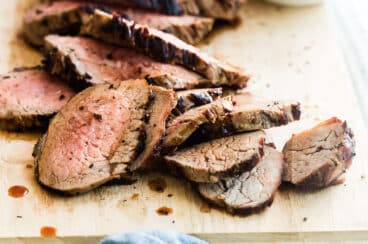
Using a cheese cloth was mentioned but not explained in using to extract.
Hi Darren, you can carefully pour the melted through cheesecloth laid over a container to skim off the solids. Hope this helps! – Meggan
I’m interested in making cups of clarified butter ahead of a lobster bake. I plan to use little cups of the butter with each plate. Does the butter stay in the liquid form in the fridge or do I have to reheat it? Will bringing to room temperature also help vs reheating?
Hi Karen, thank you for the question! The clarified butter solidifies in the refrigerator, and will soften at room temperature. You will need to reheat it to have it return to liquid. I hope you have a great lobster bake, sounds delicious! – Meggan
Meggan, I’ve found that a double boiler works well for this. I also use my gravy/fat separator to pour off the water. I might lose half an ounce of the product, but usually not if I’m careful. With regard to the milk solids, you want to reserve those and use it on popcorn, baked potatoes, or the brassica vegetables — Brussels sprouts, cauliflower, broccoli and the like.
Hi Meggan! Thanks for sharing the homemade clarified recipe. When I first tried making ghee at home, I used salted butter, but it did not work well. Later, I opted for unsalted butter, and the taste was quite satisfying.
no comments yet
Hi Richard, I’m confused by your comment, sorry! Is there a question I can help you with? Please write back and let me know, I’m happy to help! – Meggan
I’m confused. Totally.
1.I put two blocks in a pot.
2.Melted on low heat.
3. As soon as it looked all melted through I gently ladled off the liquid. About 90% was a clear golden liquid
4. Left in the pot was a very yellow liquid. This was below the golden liquid which took up about 90% of volume.
5. There is no other liquid in the Pot.
I dont see any clear liquid below the yellow.
So confused right now.
Which is the clarified butter?
The yellow part of the clear golden liquid that was on top of everything.
You mention ‘solids’. What solids? It’s all liquid. 🤔
Is this a case of misunderstanding the terminology?
Confused with what I’m saying? I am. 😁
Hi John, I’m so sorry for the confusion! I hope I can help. The yellow bright liquid in “the middle” is the clarified butter. Did you allow the butter to melt to the point where foam formed on the surface? The foam is the “milk solids” that would need to be gently removed. After ladling the clarified butter from the next layer, you should have been left with a somewhat milky liquid which is the water from the butter and likely some milk solids, as they sometimes do not all bubble to the surface. I have a video of the process under the recipe notes if that would be helpful for you as well. Sorry for the confusion again and thank you for taking the time to write. Please let me know if you have any more questions! – Meggan
I have tried 3 times to get my clarified butter to no avail. I’m 78 years old and my patience is running short. I get 3 layers in my sauce pan. Skim the top layer. Remove the “gold” middle layer and discard the bottom. I put the gold in a tall clear glass bottle with a stopper spout. I then place the bottle on the counter next to an identical bottle with olive oil. The next morning, my butter bottle has solidified and turned white. What am I doing wrong?
Hi Charlie, sorry you are having some struggles with clarified butter. Sounds like you did it exactly right, though! Clarified butter is solid at room temperature. If you heat it up, it will liquify and turn back to that beautiful color. Hope this helps! Take care! – Meggan